
Zool: Ninja of the Nth Dimension is a platform game originally produced for the Amiga by Gremlin Graphics in 1992. It was later ported to several other platforms and followed by Zool 2 in 1993.

The Chaos Engine is a top-down run and gun video game developed by The Bitmap Brothers and published by Renegade Software in March 1993. The game is set in a steampunk Victorian age in which one or two players must battle the hostile creations of the eponymous Chaos Engine across four landscapes and ultimately defeat it and its deranged inventor.

Zool 2 is a side-scrolling platform video game originally developed by The Warp Factory and published by Gremlin Graphics for the Amiga on November 1993. It is the sequel to the original Zool, which was released earlier in 1992 on various platforms.
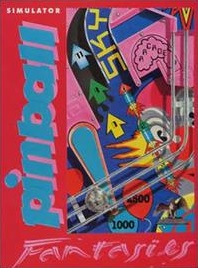
Pinball Fantasies is a 1992 pinball video game originally developed by Digital Illusions and published by 21st Century Entertainment in Europe for the Amiga home computers. It is the sequel to Pinball Dreams, which was released earlier in the same year on multiple platforms. In the game, players can choose between any of the four available playfields, both of which have their own thematic and main objectives in order to obtain the highest score possible.
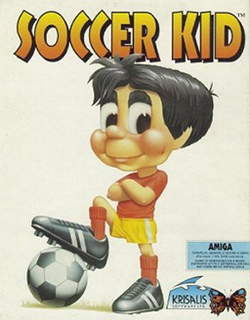
Soccer Kid is a 1993 side-scrolling platform video game originally developed and published by Krisalis Software in Europe for the Amiga. In the game, players assume the role of the titular main protagonist who travels across several countries around the world in order to repair the World Cup by retrieving pieces that were scattered by the alien pirate Scab, the main antagonist who failed to steal and add it to his trophy collection in a robbery attempt. Its gameplay mainly consists of platforming and exploration elements, with a main single-button or two-button configuration, depending on the controls setup.

Flashback, released as Flashback: The Quest for Identity in the United States, is a 1992 science fiction cinematic platform game developed by Delphine Software of France and published by U.S. Gold in the United States and Europe, and Sunsoft in Japan.

The Humans is a puzzle-platform video game developed by Imagitec Design in Dewsbury, England and originally published by Mirage Technologies for the Amiga on May 1992. It was later ported to other home computers and consoles. The goal of the game varies per level but usually revolves around bringing at least one of the player-controlled humans to the designated end area marked by a colored tile. Doing this requires players taking advantage of the tribe's ability to build a human ladder and use tools such as spears, torches, wheels, ropes and a witch doctor in later levels.
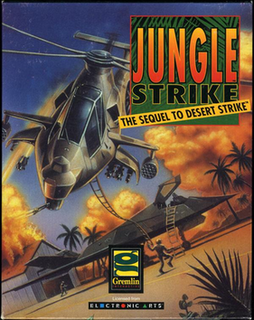
Jungle Strike is a video game developed and published by Electronic Arts in 1993 for the Sega Genesis/Mega Drive. The game was later released on several other consoles such as the Super Nintendo Entertainment System (SNES), and an upgraded version was made for DOS computers. The Amiga conversion was the responsibility of Ocean Software while the SNES and PC DOS versions were that of Gremlin Interactive, and the portable console versions were of Black Pearl Software. It is the direct sequel to Desert Strike and is the second installment in the Strike series. The game is a helicopter-based shoot 'em up, mixing action and strategy. The plot concerns two villains intent on destroying Washington, D.C.. The player must use the helicopter and occasionally other vehicles to thwart their plans.

Epic is a space combat simulation game developed by Digital Image Design and published by Ocean Software for the Commdore Amiga and Atari ST in early 1992. A port to MS-DOS also appeared in the same year, followed by a version for the NEC PC-9801 in 1993. A sequel, titled Inferno, was released in 1994 for PCs only.
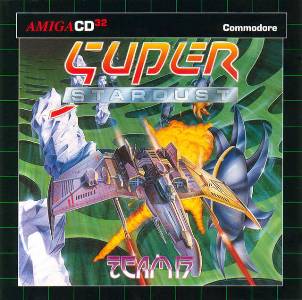
Super Stardust is a 1994 game developed by Bloodhouse and published for the Amiga (AGA) and Amiga CD32 by Team17. The game was ranked the 26th best game of all time by Amiga Power.

Powermonger is a real-time strategy game developed by Bullfrog in 1990 for Amiga and Atari ST. It derived from the Populous engine but presented using a 3-dimensional game map.

Obsession is a pinball video game developed and originally published by Unique Development Sweden for the Atari STe on December 2, 1994. It is the first video game to be created by UDS and one of the last official releases for the Atari ST platform after being discontinued in 1993 by Atari Corporation. In the game, players can choose between any of the four available playfields, both of which have their own thematic and main objectives in order to obtain the highest score possible.

Speedball 2: Brutal Deluxe is a 1990 video game based on a violent futuristic cyberpunk sport that draws on elements of handball and ice hockey, and rewards violent play as well as goals. The concept of the game is very reminiscent of the 1975 film Rollerball. The original game was developed by Bitmap Brothers, with various remakes for many platforms since being published. It is a sequel to the 1988 game Speedball.
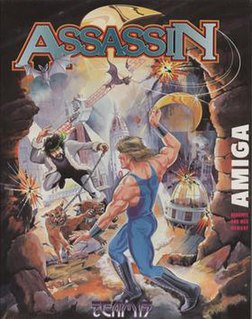
Assassin is a platform video game with shoot 'em up elements for the Amiga. It was developed by Psionic Systems and published in 1992 by Team17, the company best known for the Worms franchise. Assassin was updated and re-released in 1994 as Assassin: Special Edition.

Microcosm is a 3D rail shooter video game developed and published by Psygnosis in 1993. It was originally developed for the FM Towns, and also ported for the Sega Mega-CD, Amiga CD32, 3DO, and MS-DOS. Microcosm featured realistic FMV animation, with the graphics being rendered on Silicon Graphics workstations. The game is either in first person or third person view depending on the gaming system.
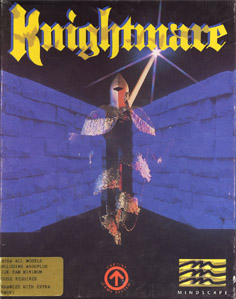
Knightmare is a computer game on the Amiga and Atari ST computer systems. It was released in 1991 by Mindscape International Ltd.. The game was written by Tony Crowther. It is based on the Anglia Television TV show Knightmare.
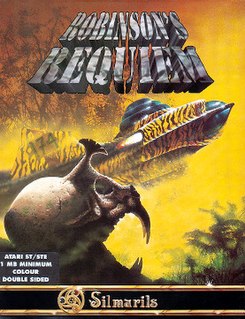
Robinson's Requiem is a 1994 survival simulation video game developed and originally published by Silmarils exclusively in Europe for the Atari ST, Atari Falcon and Amiga. Taking place in the 22nd century where Earth and colonized planets are facing overpopulation, the game sees players assuming the role of Robinson officer Trepliev 1 from the Alien World Exploration department in his attempt to escape imprisonment from the fictional planet of Zarathustra alongside another AWE Robinson named Nina1, while facing several hostile creatures and dangers in order to survive.

The Speris Legacy is a 1996 action role-playing game developed by Binary Emotions and published by Team17 that was released for the Amiga 1200 and Amiga CD32.

Brutal Sports Football is an arcade-style football video game developed by Teque London and originally published by Millennium Interactive for the Commodore Amiga in 1993. It is the first entry in the Brutal Sports Series franchise, which continued with Wild Cup Soccer in 1994, also from the same development team.

Fly Harder is a multidirectional shooter developed by Starbyte Software and published by Krisalis Software. The game was originally released for the Amiga in 1993 and was ported to the Amiga CD32 in 1994.




















